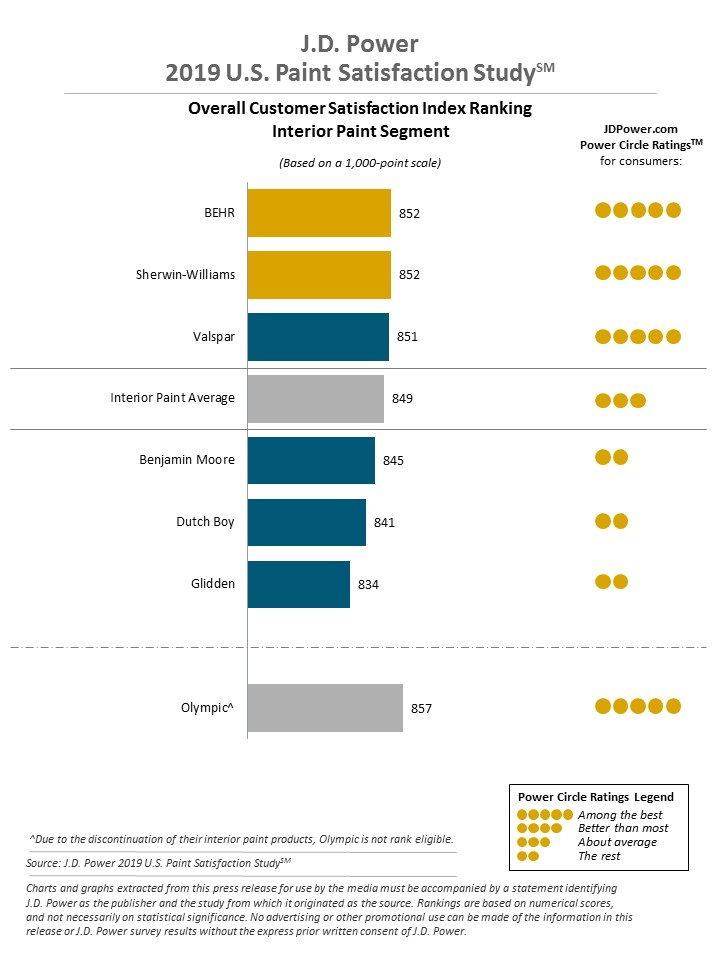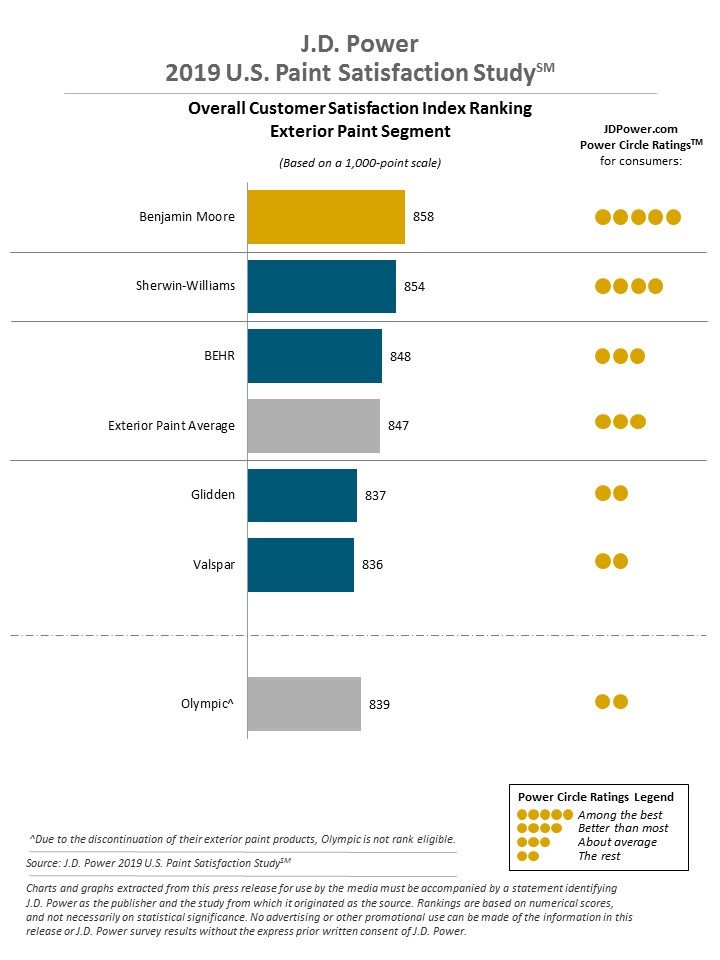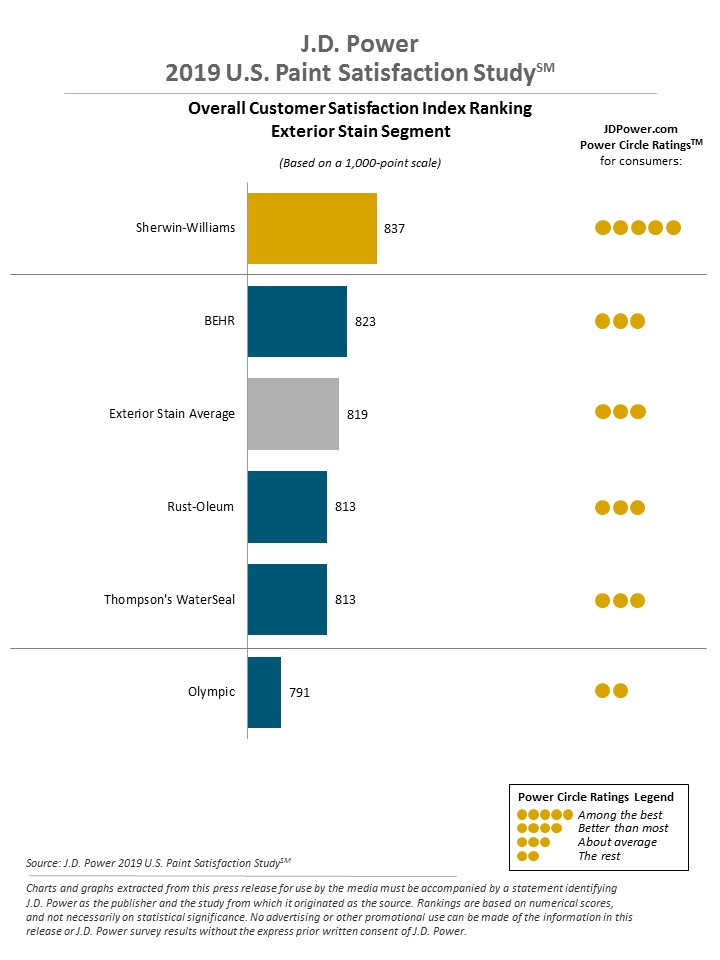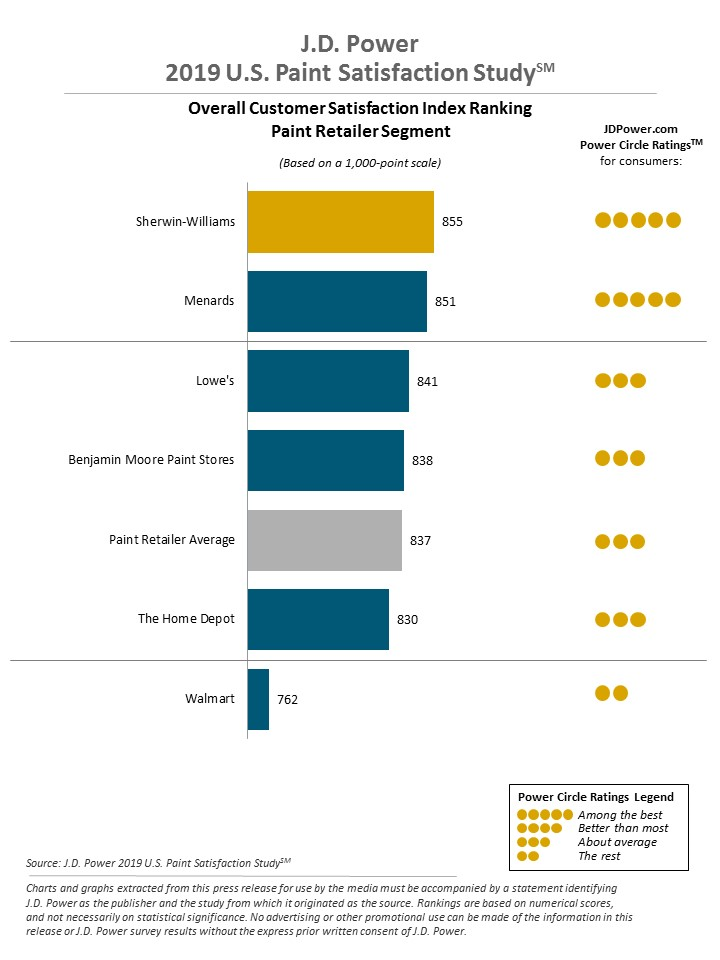Sherwin-Williams ranks highest in three segments, BEHR and Benjamin Moore rank highest in one each
COSTA MESA, Calif.: 3 April 2019 — Although a majority of paint customers are making purchases in-store, according to the J.D. Power 2019 U.S. Paint Satisfaction Study, Generation Y and Z[1] customers are more likely to make their paint purchases online than Boomers or Pre-Boomers and satisfaction among those who purchase online is higher than those who went in-store for purchases.
“Paint brands are challenged by the need to provide consultative experiences for in-store customers, while catering to the technologically reliant younger generations who want to buy paint online,” said Christina Cooley, Director of the At-Home Practice at J.D. Power. “Channeling more resources into their websites—while maintaining current in-store experiences—will only help paint brands in the long run.”
Study Results
BEHR and Sherwin-Williams rank highest in a tie in the interior paint segment with a score of 852. Valspar ranks third with 851.

Benjamin Moore ranks highest with a score of 858 in the exterior paint segment. Sherwin-Williams (854) ranks second and BEHR (848) ranks third.

Sherwin-Williams ranks highest in the exterior stain segment with a score of 837, while BEHR (823) ranks second.

Sherwin-Williams ranks highest in the paint retailer segment with a score of 855, followed by Menards(851) and Lowe’s (841).

The 2019 Paint Satisfaction Study is based on responses from 5,884 customers who purchased and applied interior paint, exterior paint and/or exterior stain in the past 12 months. The study was fielded in January 2019.
For more information about the U.S. Paint Satisfaction Study, visit https://www.jdpower.com/business/resource/paint-satisfaction-study.
J.D. Power is a global leader in consumer insights, advisory services and data and analytics. These capabilities enable J.D. Power to help its clients drive customer satisfaction, growth and profitability. Established in 1968, J.D. Power has offices serving North America, South America, Asia Pacific and Europe.
[1] J.D. Power defines the generational groups as Pre-Boomers (born before 1946); Boomers (1946-1964); Gen X (1965-1976);
Gen Y (1977-1994); and Gen Z (1995-2004).




